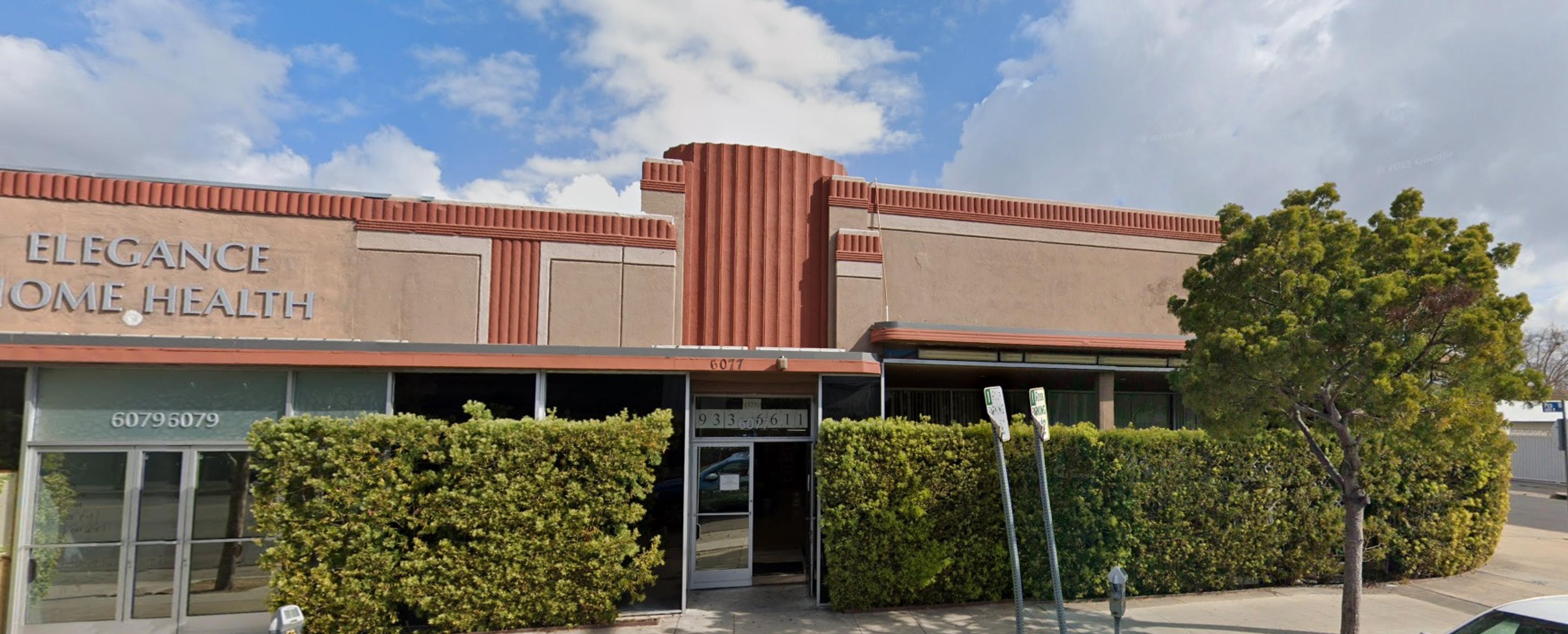You may recall a couple days ago, in my post about vanishing Deco, I mentioned at the end it was but a preview of a Deco monument ready to hit the landfill.
That structure is Pico Palace, a former bowling alley from 1939, on Pico just west of Crescent Heights.
This structure was designed by master architect William Douglas Lee. Beside the myriad of important structures listed on his Wiki page, be advised he also designed Crenshaw Bowl, 2825 Crenshaw; Llo-De-Mar Bowl, 507 Wilshire; Magnolia Bowl, 10301 Magnolia; Trojan Bowl, 2800 S. Vermont; Van Nuys Bowl,14540 Friar St.; Victory Bowling Center, 6300 Sepulveda; and Western Bowl, 721 S. Western.
Western Bowl, Lee's 1940 expression in Streamline, stood till recently, replaced with, you guessed it, a giant grey box with "accent colors".
But the question today is, what is to become of the Pico Palace?
This, this is what is to become of Pico Palace:
What the hell. Did Syd Mead design this? Nah, it's not good enough to be one of Syd's. It's like some Warner exec yelled down the hall "Hey kid! We've just greenlit a picture about robots enslaving the Mars colonists and forcing them to build ziggurats! I need some sketches stat!"
OfficeUntitled is designing this project, which will be about 100 feet tall. Is there anything 100 feet tall remotely nearby? Um, no. The flanking streets, Avila and La Jolla, are all one-story houses and two-story apartment buildings, who will now look out onto the looming backside of this:
And, once we've blanketed Los Angeles with giant 1979 space ziggurats, there will be everlasting peace between us and the robots. Just you watch.
About Nathan Marsak
NATHAN MARSAK says: “I came to praise Los Angeles, not to bury her. And yet developers, City Hall and social reformers work in concert to effect wholesale demolition, removing the human scale of my town, tossing its charm into a landfill. The least I can do is memorialize in real time those places worth noting, as they slide inexorably into memory. In college I studied under Banham. I learned to love Los Angeles via Reyner’s teachings (and came to abjure Mike Davis and his lurid, fanciful, laughably-researched assertions). In grad school I focused on visionary urbanism and technological utopianism—so while some may find the premise of preserving communities so much ill-considered reactionary twaddle, at least I have a background in the other side. Anyway, I moved to Los Angeles, and began to document. I drove about shooting neon signs. I put endless miles across the Plains of Id on the old Packard as part of the 1947project; when Kim Cooper blogged about some bad lunch meat in Compton, I drove down to there to check on the scene of the crime (never via freeway—you can’t really learn Los Angeles unless you study her from the surface streets). But in short order one landmark after another disappeared. Few demolitions are as contentious or high profile as the Ambassador or Parker Center; rather, it is all the little houses and commercial buildings the social engineers are desperate to destroy in the name of the Greater Good. The fabric of our city is woven together by communities and neighborhoods who no longer have a say in their zoning or planning so it’s important to shine a light on these vanishing treasures, now, before the remarkable character of our city is wiped away like a stain from a countertop. (But Nathan, you say, it’s just this one house—no, it isn’t. Principiis obsta, finem respice.) And who knows, one might even be saved. Excelsior!””
Nathan’s blogs are: Bunker Hill Los Angeles, RIP Los Angeles & On Bunker Hill.
